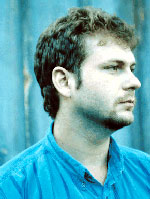ESA News has a great article talking about a ten-year study called GLOBCARBON, which uses terabytes of data from multiple satellites and sensor platforms to analyze global vegetation patterns.
The service is focused on the generation of various global estimates of aspects of terrestrial vegetation: the number, location and area of fire-affected land, known as Burnt Area Estimates (BAE), the area of green leaf exposed to incoming sunlight for photosynthesis, known as Leaf Area Index (LAI), the sunlight actually absorbed for photosynthesis, known as the Fraction of Absorbed Photosynthetically Active Radiation (fAPAR) and the Vegetation Growth Cycle (VGC).
To obtain these products, GLOBCARBON blends data from a total of five European satellite sensors: the VEGETATION instruments on SPOT-4 and SPOT-5, the Along Track Scanning Radiometer-2 (ATSR-2) on ERS-2, plus the Advanced Along Track Radiometer (AATSR) and Medium Resolution Imaging Spectrometer (MERIS) on Envisat.
Technorati tags:
agriculture, analysis, applications, earth observation, environment, esa, geo, Geography, Geospatial, gis, imagery, mapping, news, remote sensing, satellite, science, space, spatial, SPOT, vegetation





0 Response for the " ESA Vegetative study via satellite "
Post a Comment